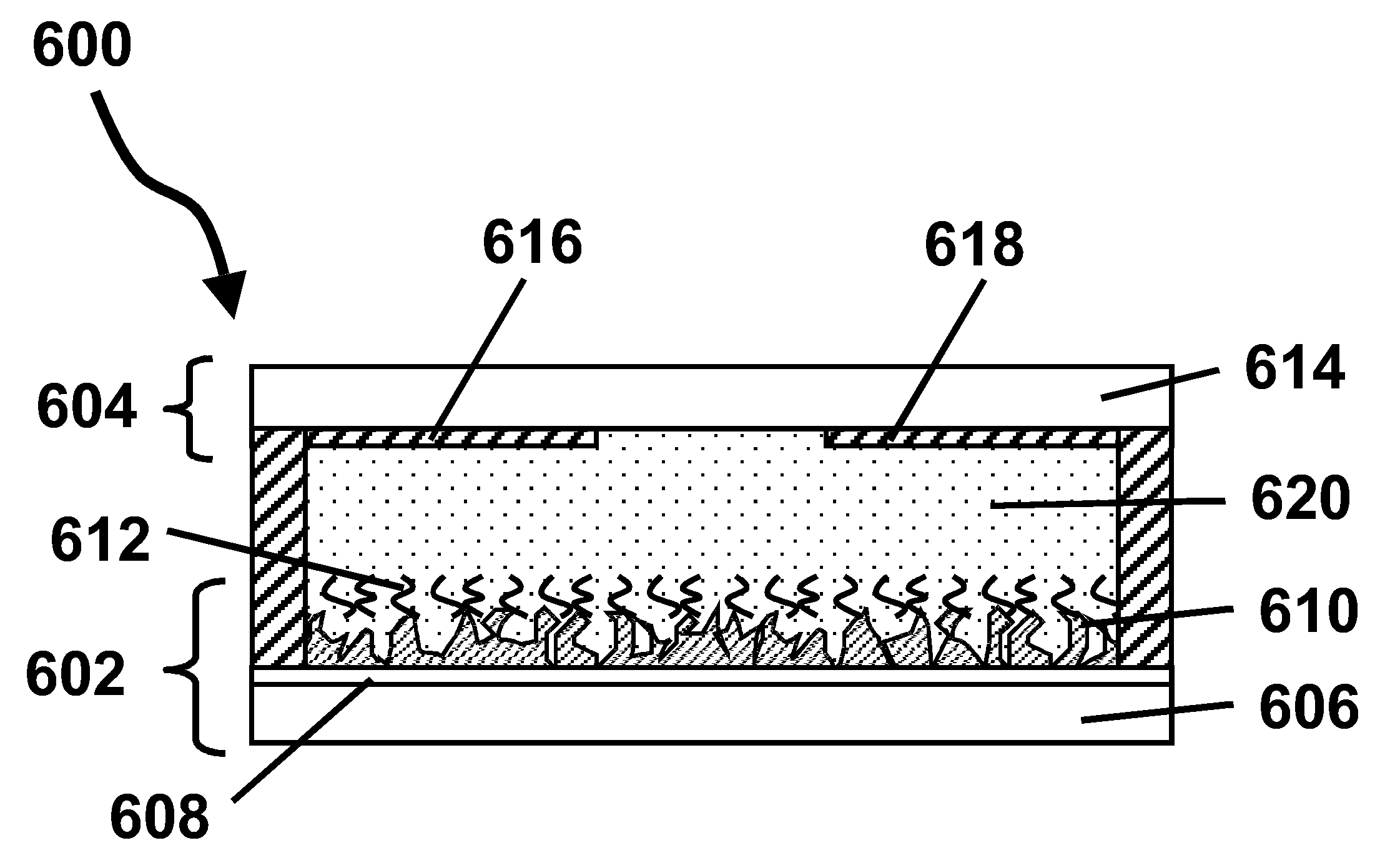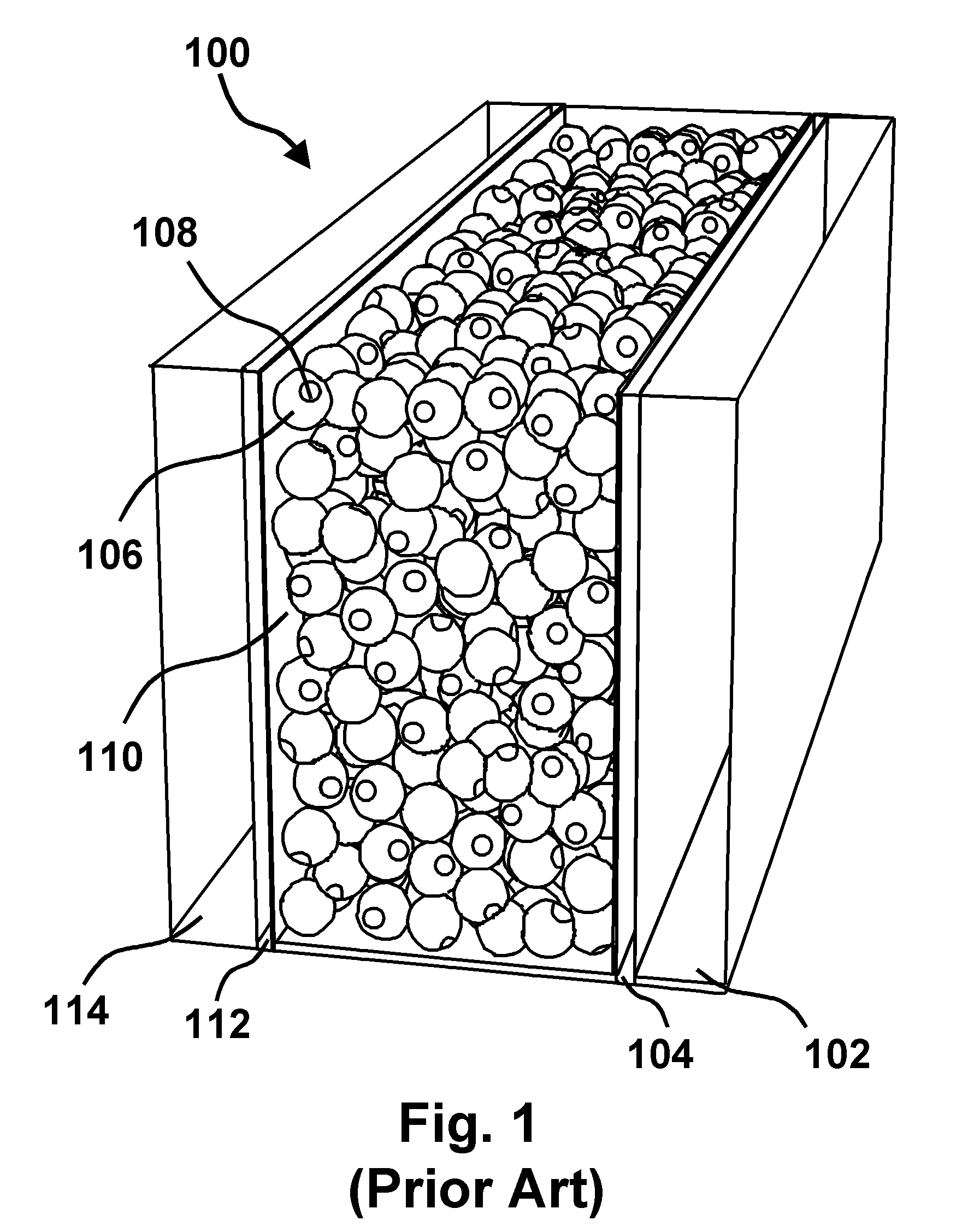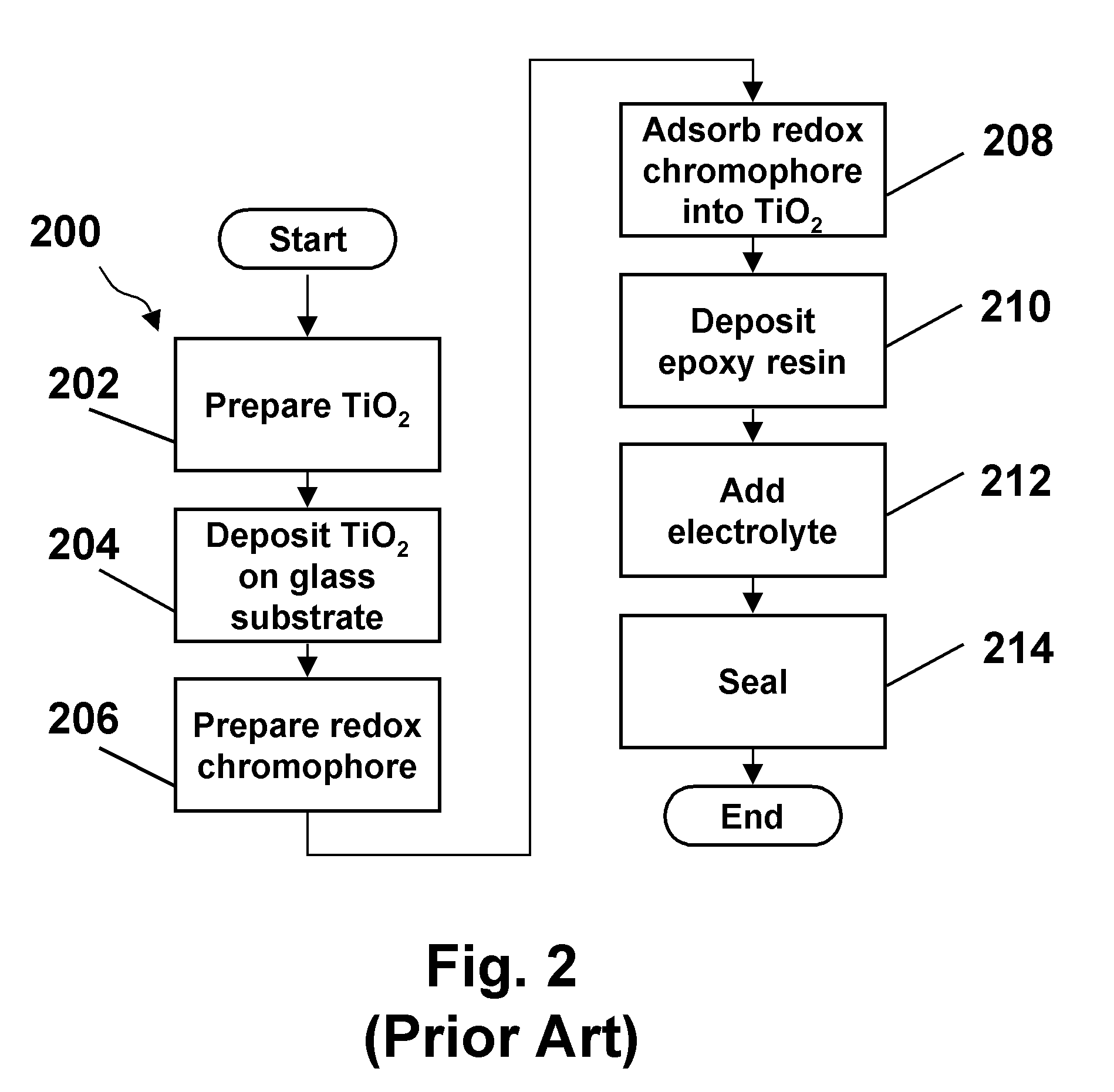Electro-optic displays, and methods for driving same
a technology of optical displays and optical components, applied in the field of optical displays, can solve the problems of affecting the performance of optical displays, requiring a significant amount of power, space, and electronics, and reducing the light degradation of redox chromophores, so as to reduce or eliminate the exposure of the electrochromic active layer, stop or minimize the degradation of electrolytes, and reduce or eliminate the light degradation of the redox chromophore
- Summary
- Abstract
- Description
- Claims
- Application Information
AI Technical Summary
Benefits of technology
Problems solved by technology
Method used
Image
Examples
first embodiment
[0162]Section A1: Solid Charge Transport Layer
[0163]FIG. 6 shows a schematic cross-section through a display (generally designated 600 having a front section 602 (through which an observer typically views the display 600) and a rear section 604. As in the prior art described above, the front section 602 includes a first glass substrate 606, an ITO conductive layer 608, a titania nano-crystalline layer 610, and a redox chromophore (or promoter) layer (e.g., viologen) 612. The rear section 604 includes a second glass substrate 614, and transparent conductive ITO display elements 616 and 618. Not shown are electrical terminals that attach to the conductive layer 608 and to conductive display elements 616 and 618.
[0164]The display 600 further includes, in accordance with the first aspect of the present invention, a solid charge transport layer 620, comprising, for example triphenylamine, which acts in place of the prior art electrolyte between front section 602 and rear section 604, and...
second embodiment
[0173]Section A2: Charge Transport Material Bonded to Promoter or Chromophore
[0174]In the second embodiment of the first aspect of the present invention, a charge transport material is bonded to the redox promoter or chromophore.
[0175]Although other methods of bonding the charge transport material to the redox promoter or chromophore may be used if desired, in a preferred form of the second embodiment, the redox promoter or chromophore is first modified to contain an amino group, if such a group is not already present. The amino-containing promoter or chromophore is then reacted with a charge transport material containing (or modified to contain) an aldehyde, acyl halide or carboxylic acid group to produce a product in which the promoter or chromophore is linked via an amide linkage to the charge transport material.
[0176]Alternatively, the promoter or chromophore may be linked to the charge transport material via an ether linkage, for example by a Williamson ether coupling reaction...
third embodiment
[0179]Section A3: Define Region in the Solid Charge Transport Layer
[0180]As already mentioned, the third embodiment of the first aspect of the present invention relates to the use of defined (separate) regions in a solid charge transport layer, and in particular the use of a solid charge transport layer which is interrupted between adjacent pixels of the display. FIG. 8 shows a display (generally designated 800), which is generally similar to the display 600 shown in FIG. 6; in particular, the display 800 comprises glass substrates 606 and 614, an ITO conductive layer 608, a titania nano-crystalline layer 610, a redox chromophore layer 612 and display elements 616 and 618, all of which are essentially the same as the corresponding elements in the display 600 shown in FIG. 6. The display 800 further comprises a solid charge transport layer 820, which is generally similar to the corresponding charge transport layer 620 shown in FIG. 6, but which differs therefrom by being interrupted ...
PUM
| Property | Measurement | Unit |
|---|---|---|
| average diameter | aaaaa | aaaaa |
| average molecular weight | aaaaa | aaaaa |
| size | aaaaa | aaaaa |
Abstract
Description
Claims
Application Information
 Login to View More
Login to View More - R&D
- Intellectual Property
- Life Sciences
- Materials
- Tech Scout
- Unparalleled Data Quality
- Higher Quality Content
- 60% Fewer Hallucinations
Browse by: Latest US Patents, China's latest patents, Technical Efficacy Thesaurus, Application Domain, Technology Topic, Popular Technical Reports.
© 2025 PatSnap. All rights reserved.Legal|Privacy policy|Modern Slavery Act Transparency Statement|Sitemap|About US| Contact US: help@patsnap.com



